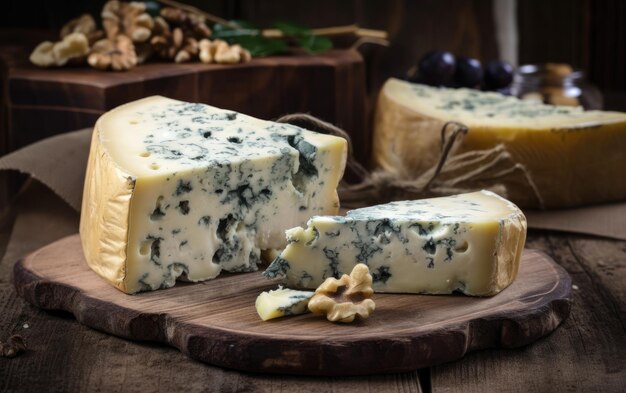Ceıvır: A Traditional Delight with Timeless Flavor
Introduction to Ceıvır
Ceıvır is more than just a dish—it is a culinary tradition deeply rooted in cultural heritage. Known for its savory aroma and tender texture, this special preparation highlights the importance of fresh ingredients, skilled cooking techniques, and the joy of sharing meals with loved ones. While ceıvır may vary slightly from one region to another, its heart remains the same: a mouthwatering combination of thinly sliced meat, aromatic spices, and slow-cooked perfection.
The name ceıvır carries with it the essence of community gatherings and festive occasions. It is not a hurried meal but one that invites patience, craftsmanship, and appreciation for the ingredients. Many families consider preparing ceıvır a form of art, where every slice, seasoning, and turn on the fire matters.
The Origins of Ceıvır
The story of ceıvır stretches back to times when cooking was closely tied to seasonal harvests and livestock cycles. Historically, it was often prepared during special occasions such as weddings, harvest festivals, and community celebrations. The tradition of making ceıvır has been passed down through generations, with each cook adding their own small variations while respecting the core recipe.
The practice of using thinly sliced meat, typically lamb or sometimes beef, ensures tenderness and allows the seasoning to penetrate deeply. In many rural areas, ceıvır also became a symbol of hospitality, offered to guests as a warm welcome.
Ingredients That Make Ceıvır Unique
One of the reasons ceıvır holds such a special place in hearts and kitchens is its reliance on simple yet high-quality ingredients. Although recipes may differ, the essentials include:
- Thinly sliced meat – Traditionally lamb, chosen for its rich flavor.
- Natural spices – Often including salt, black pepper, cumin, and sometimes a hint of paprika.
- Fresh herbs – Parsley, thyme, or oregano to enhance aroma.
- Oil or butter – For a richer taste and smoother texture.
- Optional additions – Some versions incorporate onions, garlic, or mild peppers.
The secret lies not in complexity but in the perfect balance of flavors. Each element in ceıvır plays a role in creating a harmonious bite.
Traditional Cooking Techniques for Ceıvır
Preparing ceıvır is a process that demands attention and skill. Traditionally, the meat is marinated for several hours or even overnight to absorb the flavors fully. This step not only enhances taste but also ensures tenderness.
In classic preparation:
- Marinating the Meat – Sliced meat is combined with spices, herbs, and oil.
- Slow Cooking – The meat is usually cooked on a low flame, either on skewers over an open fire or in a large pan.
- Gentle Turning – The term ceıvır is often associated with turning or rotating, ensuring the meat cooks evenly.
- Final Touches – Before serving, an extra sprinkle of herbs or spices may be added for freshness.
This slow, careful cooking method allows every bite of ceıvır to be juicy and full of depth.
Variations of Ceıvır Across Regions
Although the core idea of ceıvır remains the same, regional adaptations give it a fascinating variety. For example:
- Urban versions may use electric grills or stovetops for convenience.
- Coastal regions might add lemon juice or light marinades inspired by seafood flavors.
- Mountain villages often stick to traditional wood-fire cooking, giving the ceıvır a smoky undertone.
These differences not only reflect local tastes but also highlight how adaptable ceıvır can be.
Serving Ceıvır the Traditional Way
The joy of ceıvır is as much about presentation as it is about taste. In many traditions, ceıvır is served on large communal platters, often accompanied by:
- Freshly baked bread
- Seasonal salads
- Pickled vegetables
- Yogurt-based dips
This shared style of eating emphasizes unity, where everyone gathers around and enjoys from the same plate.
The Cultural Significance of Ceıvır
Ceıvır is deeply tied to moments of togetherness. It has long been part of family celebrations, symbolizing abundance and warmth. For many, the smell of ceıvır cooking brings back memories of childhood, holidays, and gatherings.
In some communities, making ceıvır is not just about feeding people but also about teaching patience, sharing skills, and respecting tradition. Younger generations learn from elders, ensuring that the craft of preparing ceıvır is never lost.
Ceıvır in Modern Times
While modern life often pushes people toward quick meals, ceıvır has managed to maintain its place. Many restaurants now offer ceıvır, giving city dwellers a taste of traditional flavors without the need for hours of preparation. Home cooks have also found ways to adapt ceıvır for contemporary kitchens, using stovetops, ovens, or air fryers while keeping the authentic taste intact.
Social media has also played a role, as cooking videos showcasing ceıvır reach audiences far beyond its original cultural roots. Food lovers from different countries experiment with their own versions, blending the old and the new.
Health Benefits of Ceıvır
When prepared with lean cuts and fresh ingredients, ceıvır can be a nutritious choice. It provides:
- High-quality protein for muscle health
- Essential vitamins and minerals from both meat and herbs
- Healthy fats when using olive oil or similar
- Balanced meals when paired with vegetables and whole grains
Of course, moderation is key, and the use of fresh, minimally processed components makes ceıvır both tasty and nourishing.
How to Make Ceıvır at Home
For those eager to try, here’s a simplified approach:
- Choose high-quality lamb or beef and slice thinly.
- Prepare a marinade of oil, salt, pepper, cumin, and your favorite herbs.
- Coat the meat evenly and let it rest in the refrigerator for at least 4–6 hours.
- Heat a pan or grill and cook the meat slowly, turning often.
- Serve hot with bread, salad, or yogurt.
This method keeps the heart of ceıvır alive while fitting into a modern schedule.
Conclusion
Ceıvır is a dish that bridges the past and the present, carrying flavors that have delighted people for generations. From its humble ingredients to its meaningful role in community life, ceıvır remains a symbol of warmth, hospitality, and culinary artistry. Whether cooked over an open flame in a village or on a kitchen stove in the city, ceıvır continues to bring people together, one delicious bite at a time.





